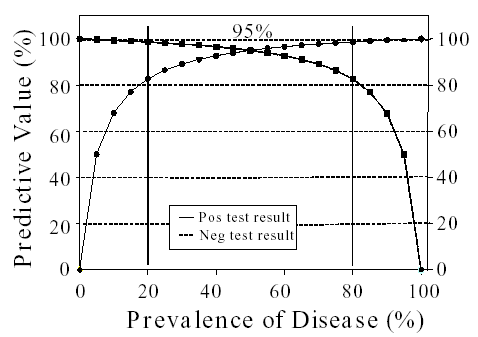________________________________________________________________________
Duodenal or gastric ulcers
Gastric low-grade MALT lymphoma
After endoscopic resection of early cancer
Presence of atrophic gastritis
Presence of dyspepsia
Plan for long term aspirin or NSAID therapy*
Plan for long term antisecretory therapy (e.g., Gastro-esophageal reflux disease)**
First degree relatives of gastric cancer patients
First degree relatives of patients with duodenal ulcer
First degree relatives of patients with Helicobacter pylori infection?
*when planning long term therapy
**when planning long term anti-secretory therapy
Table 2: Antimicrobial Activity of Bismuth and
Antisecretory Agents Used
In Treating
Peptic Ulcer Against Helicobacter pylori
![]()
|
MIC (mg/ml) |
|||
| Drug | Range | 50% | 90% |
|
Bismuth subsalicylate |
12.5-25 |
12.5 |
25 |
|
Bismuth subcitrate |
2-25 |
2-6.25 |
16-25 |
|
Cimetidine |
400-3200 |
>800 |
3200 |
|
Ranitidine |
320-1280 |
>800 |
1280 |
|
Famotidine |
128-1024 |
>800 |
1024 |
| Sucralfate | 400-3200 | 1600 | 3200 |
| Omeprazole | 12.5-50 | 25 | 25 |
| Lansoprazole | 3.13-12.5 | 6.25 | 6.25 |
Table 3. Comparison of Antimicrobial Susceptibility
|
Antimicrobial Agents |
E-test |
||
|
|
MIC (mg/ml) |
MIC50 |
MIC90 |
|
Amoxicillin |
0.016-256 |
0.016 |
0.016 |
|
Tetracycline |
0.023-0.125 |
0.125 |
0.125 |
|
Clarithromycin |
0.016-48 |
0.023 |
0.023 |
|
Ciprofloxacin |
0.002-32 |
0.125 |
0.125 |
|
Metronidazole |
0.016-256 |
192 |
<256 |
Table 4:
Monotherapy Antibiotic Efficacy in the Eradication of Helicobacter pylori
Infection
|
Antimicrobial |
Dosage |
Eradication % |
|
Metronidazole |
250 mg x 4-6 |
0-40 |
|
Tinidazole |
500 mg x 2-3 |
50 |
|
Amoxicillin |
500 mg x 4-8 |
5 |
|
Tetracycline |
250 mg x 4-8 |
10-20 |
|
Clarithromycin |
500 mg x 4 |
54 |
|
Furazolidone |
100 mg x 4 |
20-40 |
|
Nitrofurantoin |
50 mg x 4 |
15-30 |
![]()
Table 5. Drugs Commonly Used for Treatment of Helicobacter pylori Infection
Amoxicillin
Bismuth subsalicylate or citrate
Clarithromycin (macrolides)
Metronidazole/Tinidazole
Tetracycline hydrochloride or oxytetracycline
Furazolidone
Fluoroquinolones
Rafibutin
Ranitidine bismuth citrate
Proton pump inhibitors
_______________________________________________________________________________________________________
Legacy therapies
Triple therapy:* A PPI + 1 g amoxicillin + 500 mg of clarithromycin or 500 mg of metronidazole/tinidazole b.i.d. for 14 days.
Quadruple therapy: Bismuth subcitrate or subsalicylate, 2 tablets, 500 mg metronidazole and 500 mg tetracycline HCl all t.i.d. + a PPI b.i.d. for 14 days.
Sequential therapy:** A PPI + 1 g amoxicillin b.i.d. for 5 days. On day 6 stop amoxicillin and add clarithromycin 250 or 500 mg b.i.d. and metronidazole/tinidazole 500 b.i.d. to complete the 10 day course.
Salvage therapy: best if based on the results of susceptibility testing or uses drugs not previously given in the past (see text for details)
Bismuth subcitrate or subsalicylate, 2 tablets, furazolidone 100 mg, tetracycline HCl 500 mg all t.i.d. + a PPI b.i.d. for 14 days.
High dose PPI therapies
Omeprazole/esomeprazole 40 mg, amoxicillin 1 g t.i.d. for 10 to 14 days (German Therapy)****
Omeprazole/esomeprazole 40 mg + tetracycline 500 mg + metronidazole 500 mg all q.i.d. for 10 to 14 days
Omeprazole/esomeprazole 40 mg, amoxicillin 1 g t.i.d. for 5 days then add a third or third and forth drug (eg, a fluoroquinolone, clarithromycin, metronidazole, or tetracycline) to complete 10 to 14 days
Concomitant quadruple therapy: A PPI + 1 g amoxicillin + 500 mg of clarithromycin and 500 mg metronidazole/tinidazole b.i.d. for 14 days.
_________________________________________________________________________________________________________
*Should be replaced by concomitant triple therapies or sequential therapy
**See text for details regarding doses, duration, and whether the sequential administration of drugs is actually needed. In general, we recommend 14 days of therapy until it can be shown that an acceptable success rate (>95%) can be achieved with a shorter duration.
***Shorter duration (eg, 7 days) and once a day PPI produced inferior results. Past use of a fluoroquinolone predicted pretreatment resistance. Gatifloxacin not recommended because of toxicity.
****Up to approximately 70% cure rates as a dual therapy but it is better as a base therapy for a triple or quadruple salvage therapy.
Figure 1. Effect of frequency of H. pylori in a population on the predictive value of a positive or negative test. The effects is shown for tests with 95% specificity and sensitivity. Low prevalence of H. pylori results in an increasing proportion of false positive tests with high accuracy of negative tests. In contrast, when the prevalence of H. pylori is expected to be high (e.g., in duodenal ulcer) false negative tests become more prevalent. Even at low or high prevalence of H. pylori infection, the tests retain their stated specificity and sensitivity. The authors thank A. Sonnenberg for help in construction of this figure.

Figure 2. Age related incidence (per 100,000/year) of different cancers among men in the United States showing that adenocarcinoma of the esophagus, despite its marked increase, is a very rare disease with an incidence approximately equal to small bowel cancer. Even after the marked decline in gastric cancer in the U.S., it remains a much more important problem than adenocarcinoma of the esophagus. Data from the Seer database for the period of 1997-2001 [Surveillance, Epidemiology, and End Results (SEER) Program (www.seer.cancer.gov)]
